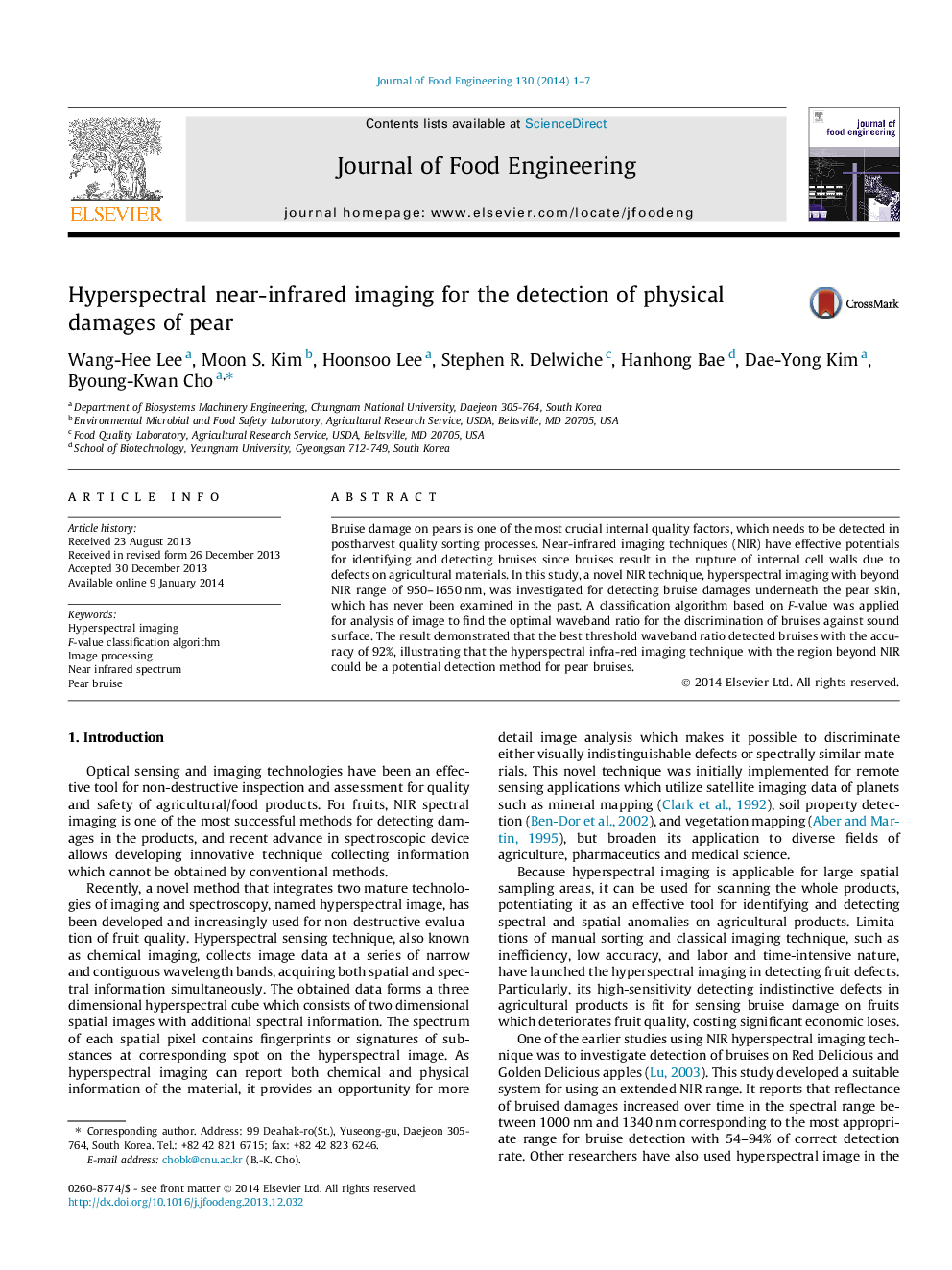| Article ID | Journal | Published Year | Pages | File Type |
|---|---|---|---|---|
| 223069 | Journal of Food Engineering | 2014 | 7 Pages |
•Hyperspectral imaging technology was used to detect bruise damage in Shingo pear.•NIR range of 950–1650 nm was effective for detecting bruise underneath pear skin.•Optimal waveband ratio for detecting pear bruises was determined based on F-value.•The best threshold waveband ratio detected bruises with accuracy of 92%.•Hyperspectral NIR imaging could be a potential detection method for fruit bruises.
Bruise damage on pears is one of the most crucial internal quality factors, which needs to be detected in postharvest quality sorting processes. Near-infrared imaging techniques (NIR) have effective potentials for identifying and detecting bruises since bruises result in the rupture of internal cell walls due to defects on agricultural materials. In this study, a novel NIR technique, hyperspectral imaging with beyond NIR range of 950–1650 nm, was investigated for detecting bruise damages underneath the pear skin, which has never been examined in the past. A classification algorithm based on F-value was applied for analysis of image to find the optimal waveband ratio for the discrimination of bruises against sound surface. The result demonstrated that the best threshold waveband ratio detected bruises with the accuracy of 92%, illustrating that the hyperspectral infra-red imaging technique with the region beyond NIR could be a potential detection method for pear bruises.
